Summary
Producing high-quality plastic injection moulded parts faster and more cost-effectively than the competition is critical to manufacturing success in today's global marketplace.
Mould makers and manufacturing professionals can use SOLIDWORKS Plastics mould filling simulation software to optimise parts for manufacturing, refine tooling to improve quality and shorten cycle times to reduce manufacturing costs.
Whether you design parts, create moulds, or manage injection moulding production, SOLIDWORKS Plastics solutions can help you solve your injection moulding challenges instead of costly and time-consuming prototype iterations, so you can consistently meet your product development and manufacturing goals.
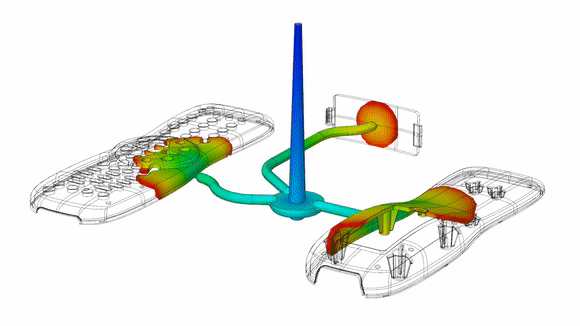
THE NEED FOR IMPROVING INJECTION-MOULDING PERFORMANCE
In almost all types of product development, from consumer electronics and automobiles to children's toys and medical devices, the use of components made of plastic materials is steadily increasing. There are several reasons for this trend, which started decades ago, of which the main drivers are:
- Plastic parts are typically less expensive to manufacture and do not rust or corrode like metals.
- Plastics are lighter than traditional materials, and because plastics are so flexible, they can be moulded into more complex patterns and shapes with more intricate surface detail.
In short, plastics are better suited to meet the product development needs of today's growing number of manufacturers. However, anyone involved in the manufacture of plastic components knows that manufacturing plastic parts is more challenging and complicated than designing in metal.
More than 80% of the plastic parts used in today's products require injection moulding, which is the process of injecting liquified plastic materials into a mould, allowing the material to cool/solidify and ejecting the moulded part.
Injection moulding is both an art and a science in many ways. Successfully producing injection moulded parts free from manufacturing defects requires a complex combination of time, temperature, pressure, material, and variations in tool or part design.
Designers, mould makers, and manufacturing professionals must balance all these variables to produce quality parts.
- Does the part geometry meet wall thickness and draft requirements?
- How long should the injection/cooling/ejection cycle be?
- What temperature is optimal for material, cooling channels and mould?
- What pack/fill pressure and best material to use for a specific part?
- And will the use of special inserts, side moves, additional injection gates, special secondary operations, or unique coolant channel designs improve part quality or decrease cycle times?
The conventional technique for answering these questions and generating quality components is inefficient, expensive, and disjointed, resulting in slow, expensive design iterations and test cycles that can, without a doubt, compromise the motive for the usage of plastics and position a manufacturer at a competitive disadvantage.
Part designers regularly depend on iterations with the mould maker and the mould maker’s understanding to assess the manufacturability of a part. And balancing industrial design and manufacturing considerations takes time.
Although mould makers draw upon their experience and understanding to develop moulds, they nevertheless want to create prototype moulds to validate mould performance, normally after finishing trial-and-error iterations that add time and cost to the process.
Charged with optimising manufacturing run cycles, production specialists frequently want to iterate with designers and mould makers. Unfortunately, enhancing part quality at this level at this stage is hard and generally resolved thru mould remodel. With moulds ranging in fee from $10,000 to more than $1 million, mould remodel is a costly and time-consuming proposition.
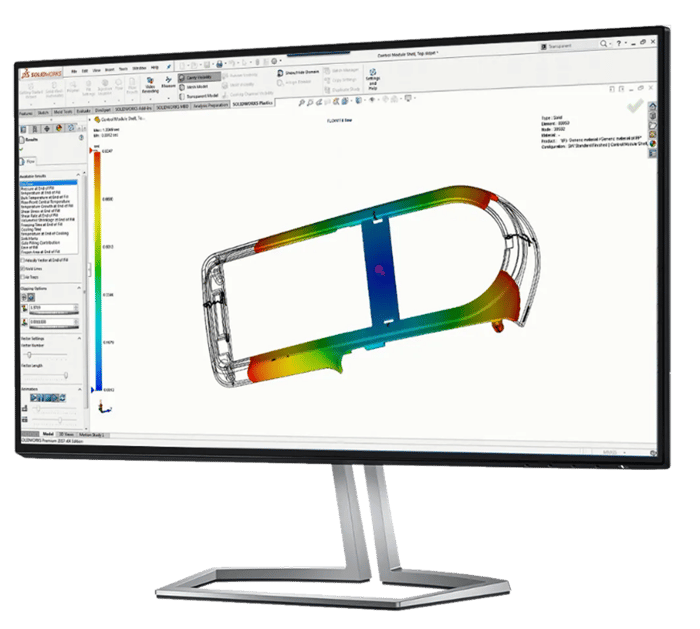
INJECTION MOLDING CHALLENGES ARISE THROUGHOUT THE PROCESS
Professionals involved in the development and production of injection moulded parts and tooling, from the original designer to the mould maker to the manufacturers, face unique challenges. Everyone has their own perspective, approach, and specific types of problems. Designers care about design aesthetics: the look and feel of a piece. Mould makers face quality considerations and want to ensure their mould produces acceptable parts. Manufacturers want to make sure production runs as smoothly and efficiently as possible. Despite different perspectives and roles, everyone involved in the injection moulding process benefits from access to a plastic simulation environment.
Case study. – ECCO (read full article here)
As the world's largest manufacturer of emergency response products, Electronic Controls Company (ECCO) relies on the development of high-quality injection moulded plastic parts, fit for the outdoors where they are exposed to all kinds of weather conditions. In such an environment, ECCO often prefers plastic parts because they do not rust. With lightweight lenses, the use of plastics for the optical components is a must. ECCO acquired SOLIDWORKS Plastics Professional mould injection simulation software to improve the manufacturability of plastic parts.
“Prior to 2012, we relied on our tool manufacturer to spot and address injection-molding issues,” recalls Mechanical Design Engineer John Aldape. “However, when we received glass-filled nylon alarm enclosures with surface-knitting issues, we decided to investigate mold-filling simulation technology. We wanted to independently assess how a mold would fill and where knit lines would be, instead of waiting on iterations with the toolmaker.”
ECCO chose SOLIDWORKS Plastics solutions as it is straightforward to apply and simulates how the plastic will fill the mould, helping the company avoid manufacturability issues. By implementing SOLIDWORKS Plastics Professional software, ECCO has
- minimized iterations with its mould maker
- removed mould-related manufacturing issues
- optimised parts for mould injection
- and advanced lens optics and product aesthetics
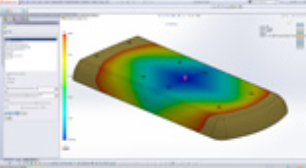
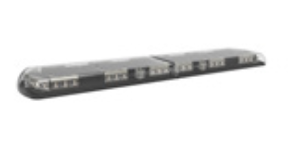
ECCO: SOLIDWORKS Plastics simulation
Case study. – Ambix Manufacturing (read full article here)
Ambix Consulting specialises in precision injection moulding and advanced engineering plastics. President, Founder and Owner Jeffrey D. Nicoll used his extensive experience in plastic failure analysis to build a full-service product development company offering product research and development, industrial design, prototyping and functional testing, failure analysis, tool design, and material selection as well as contract manufacturing by the sister company Ambix Manufacturing.
As demand for Ambix’s expertise in plastics and mould-making increased, Nicoll decided to invest in an injection-moulding simulation solution to accelerate complex mould development. “The historical approach to injection molding is to continue creating prototype molds and shooting samples until an acceptable mold is reached,” Nicoll explains. “To avoid this type of project creep and provide the most efficient, cost-effective solutions to our clients, we sought to utilize injection-mold simulation software to resolve manufacturing issues upfront, taking both time and cost out of the mold development process.”
After using SOLIDWORKS Professional design software and SOLIDWORKS Simulation analysis software, Nicoll chose SOLIDWORKS Plastics Professional simulation software because it is easy to use, offers robust injection moulding simulation capabilities, and is fully integrated with SOLIDWORKS CAD software.
Through the implementation of SOLIDWORKS Plastics Professional software, Ambix cut mould development time in half, achieved a 95% success rate on the first try in the moulds, increased annual mould production from a few thousand to 10 million parts, and achieved close correlation between simulations and production.
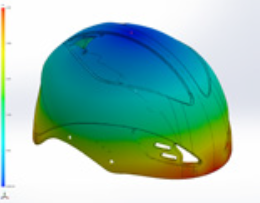

Ambix Manufacturing: SOLIDWORKS Plastics simulation
GAIN A COMPETITIVE ADVANTAGE BY OPTIMIZING INJECTION MOLDING
With more and more successful products today incorporating plastic components and the trend toward greater use of plastics continuing, manufacturers can gain a significant competitive advantage by leveraging SOLIDWORKS Plastics simulation technology to shorten injection moulding part design while simultaneously improving the quality of injection-moulded parts.
Rather than continuing to suffer the delays and costs associated with performing traditional prototype mould iterations and test cycles to meet manufacturing requirements, your company can utilise SOLIDWORKS Plastics simulation software to optimise parts for manufacturability, refine tooling to improve quality and shorten cycle times to reduce manufacturing costs.
Whether you are a part designer, mould maker or injection moulding manufacturer, SOLIDWORKS Plastics professional injection mould simulation software can help you do your job better and overcome the many challenges you face. By saving time, reducing costs, increasing quality, improving communication, and supporting collaborative workflows, SOLIDWORKS Plastics software enables you to contribute more consistently to the success of your company.
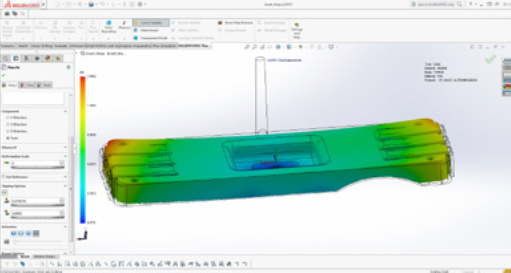
Watch a replay of our SOLIDWORKS Plastics webinar here.
To learn more about how SOLIDWORKS Plastics software can improve your injection moulding development and production processes, visit mecad.co.za or get in touch with anyone from the MECAD team.
With the advanced design capabilities of SOLIDWORKS Plastics software, injection moulding has been made easier than ever. MECAD offers special bundles to help you bring your parts designs from concept through production with confidence and precision. Explore them today at: https://mecad.co.za/products/solidworks-plastics/






.png)